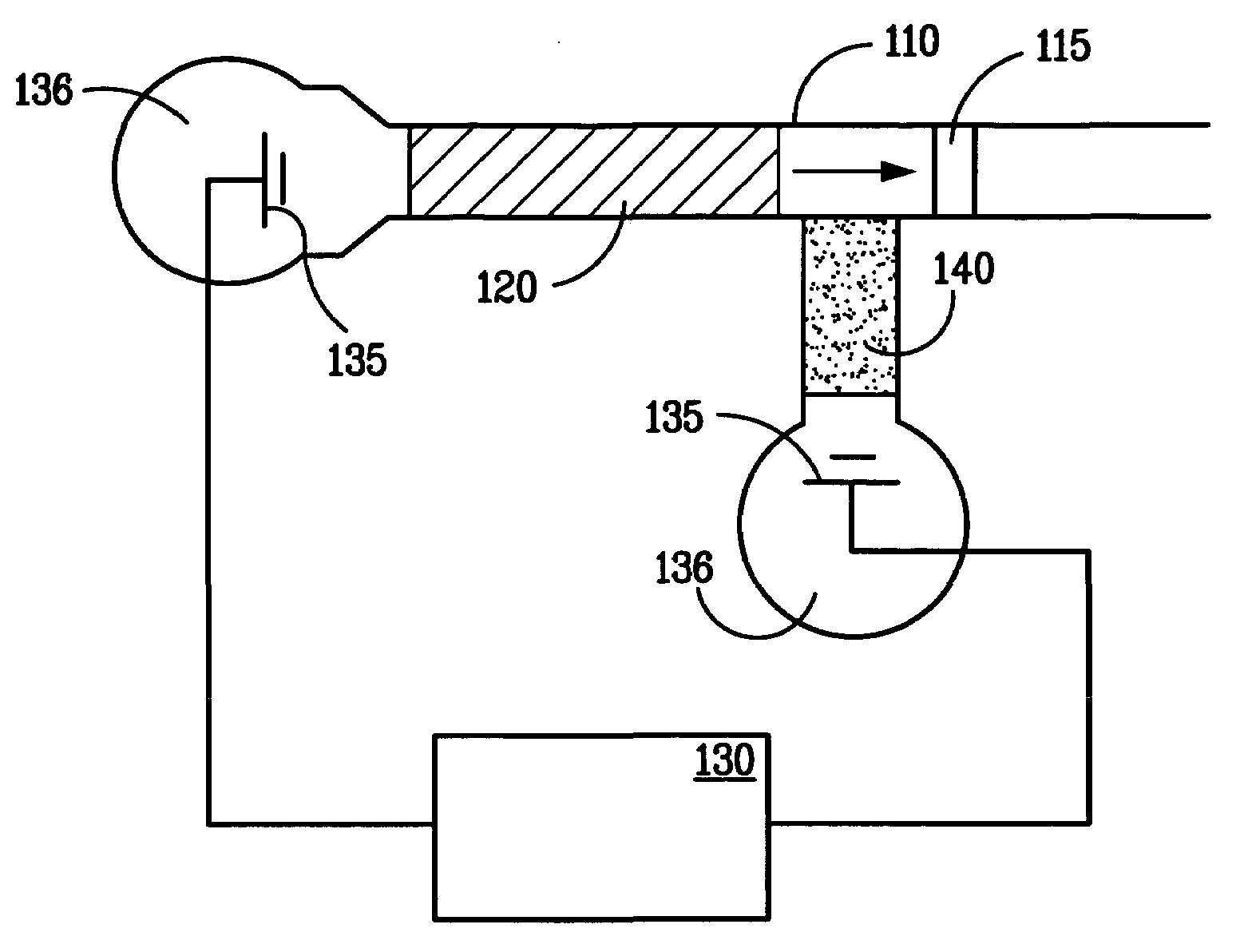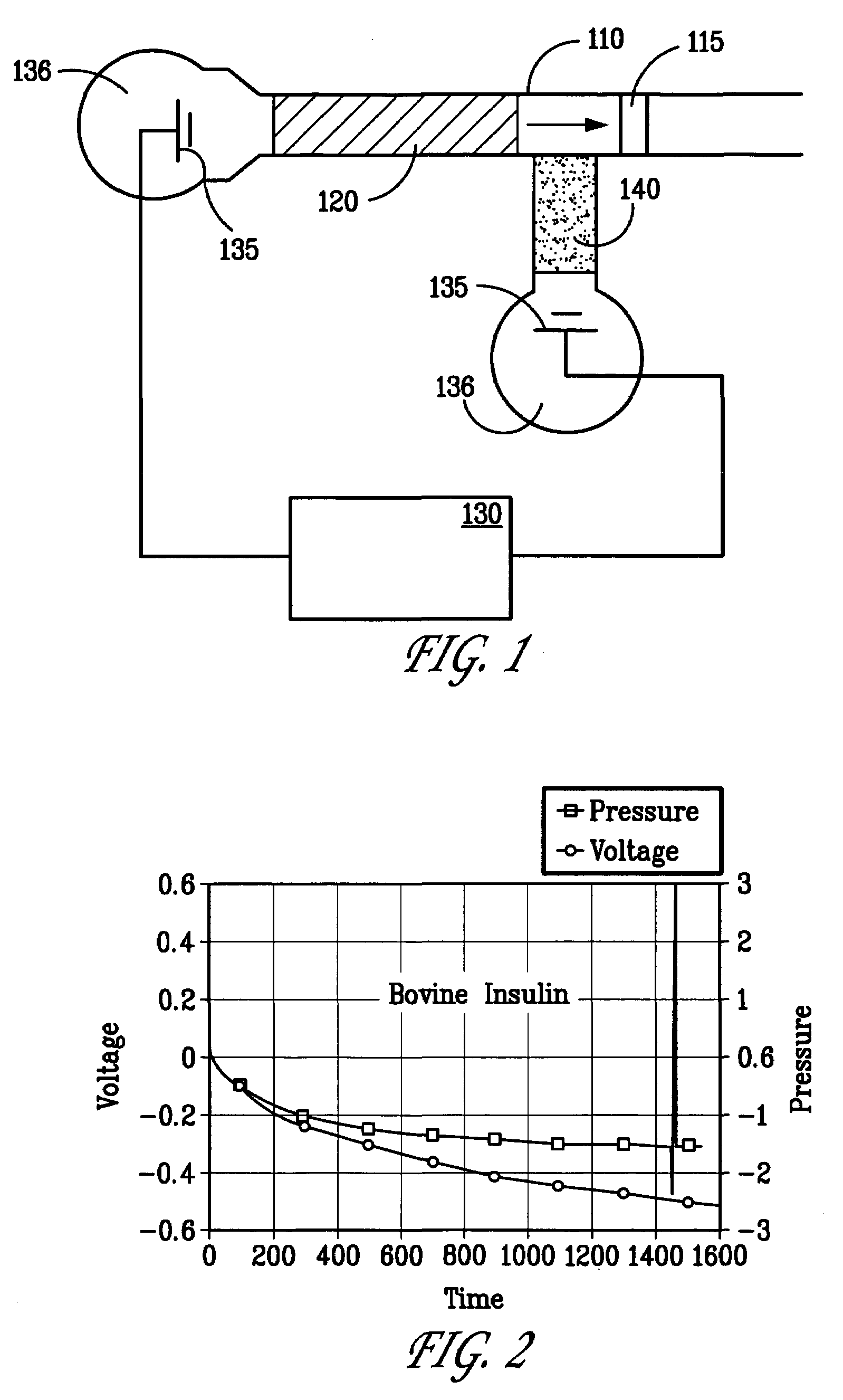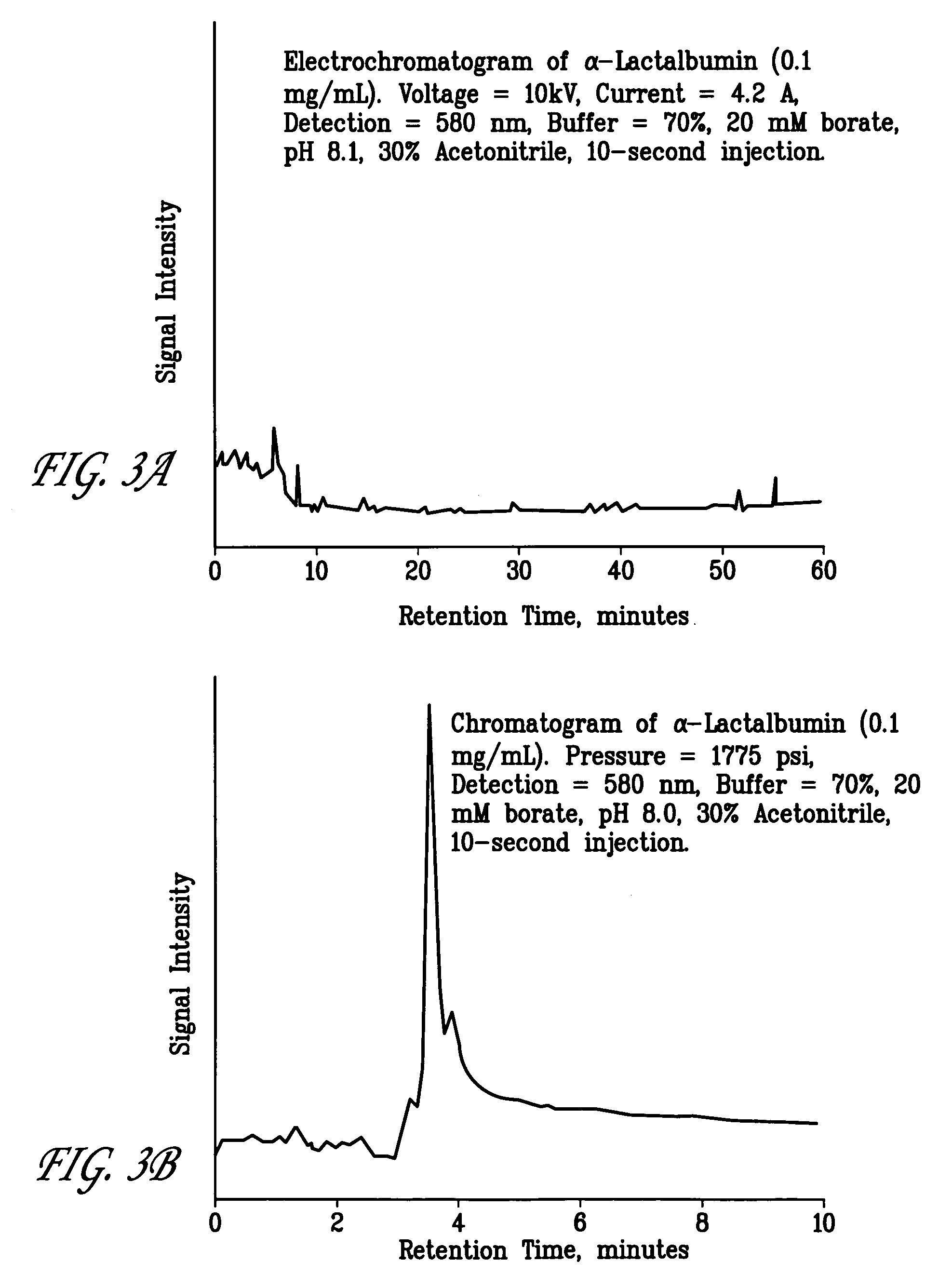Cast-to-shape electrokinetic trapping medium
- Summary
- Abstract
- Description
- Claims
- Application Information
AI Technical Summary
Benefits of technology
Problems solved by technology
Method used
Image
Examples
example 1
[0026]Prior to filling a capillary tube with a monomer solution the walls of the capillary were pretreated. Pretreatment involved injecting a solution comprising H2O (50 vol %), acetic acid (30 vol %), and Z-6030 (20 vol %) (Z-6030 is the tradename of an adhesion promoter obtained from Dow Chemical), into the capillary. The pretreatment solution remained in contact with the capillary walls for at least one hour and was washed from the capillary, preferably with a solution of 1 mM sodium acetate (80 vol %) in 1-propanol (20 vol %).
[0027]A monomer mixture was made by mixing together lauryl acrylate (16 vol %), 1,6-hexanediol diacrylate (10 vol %), and 3-(trimethoxysilyl)propylacrylate (silyl acrylate—12 vol %). A solution was prepared by adding a solvent mixture comprising 2-methoxyethanol (about 43 vol %), acetonitrile (about 11 vol %), and a 6.8 pH phosphate buffer (about 8 vol %) to the monomer mixture. Prior to injecting the solution into the capillary tube about 0.2 vol % of a po...
example 2
[0032]A fused silica capillary tube having an internal diameter of about 100 μm was pretreated with a pretreatment solution comprising deionized H2O (50 vol %), glacial acetic acid (30 vol %), and 3-(trimethoxysilyl)propylacrylate (20 vol %) for about 12 hrs. The pretreatment solution was removed by rinsing with a solution of 1 mM sodium acetate (80 vol %) and 1-propanol (20 vol %). After air drying, a monomer reagent mixture was injected into the capillary.
[0033]As above, a photomask was provided by threading the capillary tube through a length of PEEK tubing and cutting away a section of the PEEK tubing to permit exposure of all or a portion of the monomer mixture to UV radiation.
[0034]A monomer mixture comprising a hydrophobic monomer, such as lauryl acrylate (16 vol %), a crosslinker, such as 1,6-hexanediol diacrylate (10 vol %), and a hydrolyzable monomer, such as 3-(trimethoxysilyl)propyl acrylate (12 vol %) was dissolved in a solvent comprising 2-methoxyethanol (43 vol %), ac...
example 3
[0045]A porous polymer monolith was prepared as the stationary phase in a capillary chromatography column as described in either of Examples 1 or 2 above. Ovalbumin was labeled with fluorescein isothiocyanate and dissolved in a mixture of 20 mM borate, pH 8.4, and 30 vol % acetonitrile to a concentration of about 0.5 mg / mL. Under these conditions the ovalbumin becomes charged. Following injection of the ovalbumin solution onto chromatography column, a voltage of about 10 kV was applied to the capillary column for about 20 minutes. Subsequently, the electric field strength was decreased and a pressure of about 1850 was applied to the chromatography column.
[0046]Increasing quantities of ovalbumin were injected serially onto a porous polymer stationary phase as indicated by the increased solution injection times (e.g., 10, 60 and 120 sec). As before, none of the charged ovalbumin was eluted from the chromatography column during application of the electric field. Referring now to FIGS. ...
PUM
| Property | Measurement | Unit |
|---|---|---|
| Pressure | aaaaa | aaaaa |
| Electric potential / voltage | aaaaa | aaaaa |
| Solution | aaaaa | aaaaa |
Abstract
Description
Claims
Application Information
 Login to View More
Login to View More - R&D
- Intellectual Property
- Life Sciences
- Materials
- Tech Scout
- Unparalleled Data Quality
- Higher Quality Content
- 60% Fewer Hallucinations
Browse by: Latest US Patents, China's latest patents, Technical Efficacy Thesaurus, Application Domain, Technology Topic, Popular Technical Reports.
© 2025 PatSnap. All rights reserved.Legal|Privacy policy|Modern Slavery Act Transparency Statement|Sitemap|About US| Contact US: help@patsnap.com



